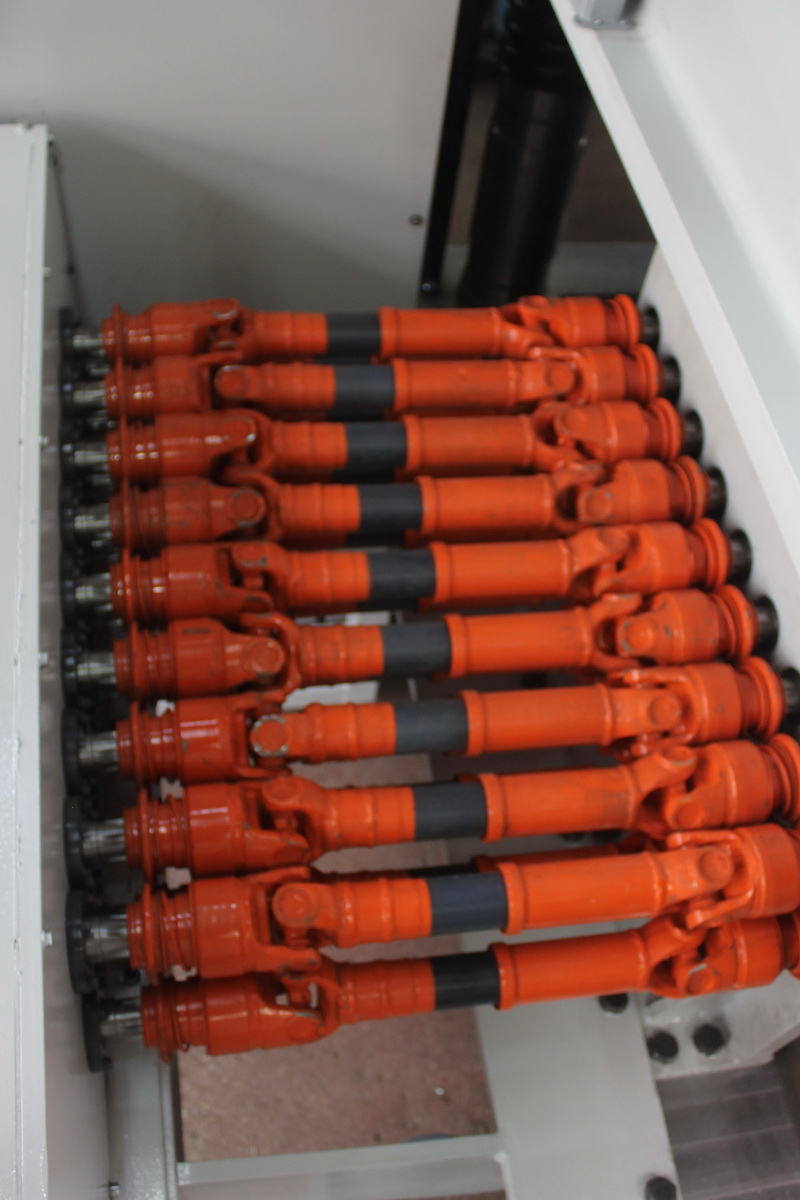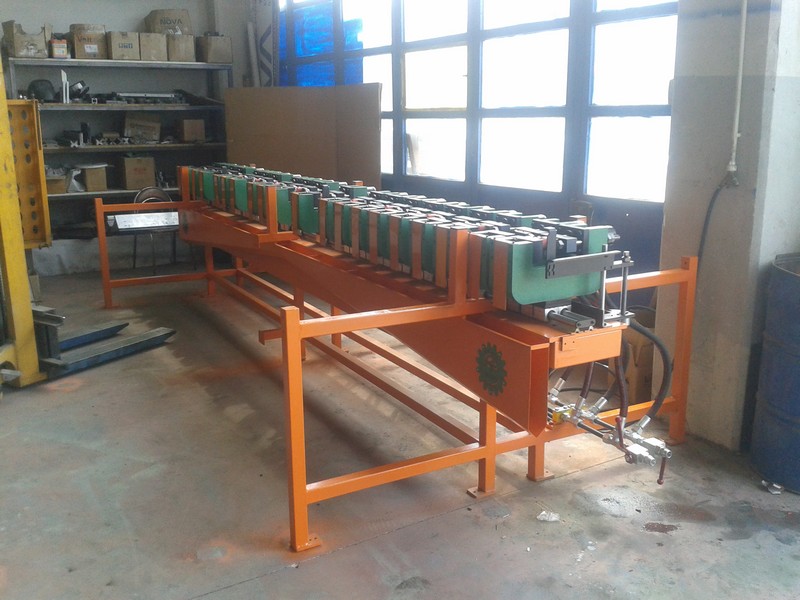What is Industrial Machinery Relocation? Industrial Machinery Relocation refers to the complex and sensitive process of moving heavy-duty industrial machinery from one location to another. This might be due to expansion, downsizing, or reorganization needs. This procedure requires precise planning, skilled manpower, the right tools and equipment, and compliance with safety regulations.
Why is it Important? The importance of a well-executed Industrial Machinery Relocation can’t be overemphasized. It minimizes downtime, maintains operational efficiency, and can potentially save a company millions in terms of avoiding damages or delays. Moreover, it guarantees the safety of workers involved in the process and preserves the integrity and functionality of the machinery itself.
İçindekiler Tablosu

Planning for Industrial Machinery Relocation
Assessing the Existing Setup The first step in the journey of industrial machinery relocation is conducting a thorough assessment of the existing setup. This involves taking inventory of all machinery, understanding their specifications, and noting their current condition. What’s their operational efficiency? Are there any ongoing issues or needed repairs?
Formulating a Comprehensive Plan Once the current situation is understood, a comprehensive relocation plan must be formulated. This plan should include details such as the relocation schedule, task assignments, transportation logistics, and contingency strategies. A well-thought-out plan is like a road map that guides the entire relocation process, ensuring everything runs like a well-oiled machine.
Identifying the Right Industrial Relocation Service Provider
Necessary Qualifications When it comes to entrusting someone with your valuable machinery, you want to be sure they’re the right fit. Look for service providers with relevant industry experience, proper licensing, insurance, and a solid reputation for quality service. These are non-negotiables when it comes to identifying the right industrial relocation service provider.
Things to Look For In addition to the basics, there are other factors to consider. Does the provider offer comprehensive services, or will you need to juggle multiple vendors? Do they use the latest technology and equipment for safe and efficient relocation? These are essential considerations in your selection process.
Preparing Your Industrial Machinery for Relocation
Disconnecting and Dismantling Before any machinery can be moved, it must be disconnected from power sources and, in many cases, dismantled. This process must be carried out meticulously, ensuring that every component is correctly labelled and catalogued for ease of reassembly at the new location.
Safe and Secure Packaging Once disconnected and dismantled, each part of the machinery must be packed securely to prevent damage during transit. This involves using appropriate packaging materials and methods that provide sufficient protection. Remember, even a minor scratch or dent can compromise the functionality of an industrial machine.
Transportation and Logistics for Industrial Machinery Relocation
Selecting the Right Vehicles The type of vehicle used for transportation plays a significant role in the success of an industrial machinery relocation project. It’s not just about having a big enough truck – it’s about ensuring the vehicle is capable of safely transporting the load. Factors like load-bearing capacity, ease of loading and unloading, and the vehicle’s condition must be considered.
Managing Logistics Efficiently The journey from point A to point B might seem straightforward, but when dealing with industrial machinery, it’s a logistical maze. Routes must be planned considering vehicle size, load weight, road conditions, traffic laws, and more. Effective logistics management is key to ensuring a smooth and timely relocation.
Industrial Machinery Installation in the New Location
Proper Placement After successfully transporting your machinery to the new location, the next step is installation. This involves determining the ideal placement for each machine, considering factors like workflow efficiency, accessibility for maintenance, and safety considerations. Careful thought must be put into this stage to ensure optimal functionality in the new location.
Reassembly and Connection Once the machinery is correctly positioned, it’s time for reassembly and connection to the power source. This task must be executed meticulously, following the manufacturer’s guidelines to prevent any operational issues. Once connected, preliminary checks should be run to confirm successful installation.
Quality Assurance and Functionality Checks
Testing for Operational Efficiency After all machines are installed and connected, it’s time to run comprehensive functionality checks. This includes testing each machine under various operational conditions to confirm its efficiency and reliability. Any issues identified during this stage should be promptly addressed to avoid operational disruptions.
Ongoing Maintenance Considerations Relocation can be tough on machinery. Therefore, once the relocation process is complete, a schedule for regular maintenance checks should be put in place. This helps to identify and address potential issues early on, ensuring continued operational efficiency and longevity of the machinery.
Cost Considerations in Industrial Machinery Relocation
Budgeting for Relocation Industrial machinery relocation can be a costly affair. Therefore, it’s crucial to create a comprehensive budget that covers all aspects of the relocation process, from planning to final installation. This helps to prevent unexpected financial surprises and ensures a seamless relocation process.
Hidden Costs and How to Avoid Them While creating a budget, it’s important to account for hidden costs. These might include overtime pay for employees, unexpected repairs or replacements, and costs associated with delays or disruptions. By anticipating these costs, you can create a more accurate budget and avoid financial stress.
Legal and Regulatory Considerations
Compliance with Laws and Regulations Industrial machinery relocation is governed by various laws and regulations aimed at ensuring safety and environmental protection. Non-compliance can result in hefty fines or legal repercussions. Therefore, it’s crucial to understand these laws and ensure strict compliance throughout the relocation process.
Managing Permits and Paperwork Relocating industrial machinery often requires various permits and paperwork. This might include transport permits, installation permits, and safety certifications. Managing this paperwork can be a tedious task, but it’s a crucial part of the relocation process.
Contingency Planning for Industrial Machinery Relocation
Anticipating Problems Despite meticulous planning, things can go wrong during the relocation process. Machinery might break down, transportation might be delayed, or installation issues might arise. Therefore, it’s crucial to anticipate potential problems and have a contingency plan in place.
Managing Delays and Interruptions Delays and interruptions can significantly impact the timeline and cost of your industrial machinery relocation project. Effective management involves having a backup plan, maintaining open lines of communication, and being flexible in your approach.
The Role of Technology in Industrial Machinery Relocation
Use of Modern Equipment and Tools Technology has revolutionized the world of industrial machinery relocation. From advanced lifting and transport equipment to digital tools for planning and tracking, embracing modern technology can significantly enhance the efficiency and success of your relocation project.
Embracing Digitalization Digitalization plays a crucial role in the modern industrial relocation process. Digital tools offer real-time tracking, streamline communication, enhance planning and logistics management, and improve overall project efficiency. It’s time to ditch the paperwork and embrace the digital revolution!
Employee Training and Safety during Industrial Machinery Relocation
Importance of Training Training is crucial to the success of any industrial machinery relocation project. Employees need to be trained on safety protocols, operation of new equipment, and changes in workflow or processes. This not only ensures a smooth transition but also promotes a safe and efficient work environment.
Ensuring Workplace Safety Safety is paramount during the relocation process. Strict safety protocols must be in place and adhered to, to prevent accidents and injuries. This involves using the right personal protective equipment, following safe lifting procedures, and maintaining a clean and organized work environment.
The Future of Industrial Machinery Relocation
Upcoming Trends As we look to the future, several trends are shaping the world of industrial machinery relocation. These include the increased use of AI and robotics, sustainable relocation practices, and a shift towards remote monitoring and predictive maintenance.
Impact of Technological Innovations Technological innovations continue to revolutionize industrial machinery relocation. With the advent of AI, IoT, and advanced analytics, we can expect to see more efficient, accurate, and streamlined relocation processes in the future. This not only enhances productivity but also significantly reduces relocation costs.
Frequently Asked Questions
- What is Industrial Machinery Relocation? Industrial Machinery Relocation is a complex process that involves moving heavy-duty industrial machinery from one location to another. It requires detailed planning, the right tools and equipment, skilled manpower, and adherence to safety protocols.
- Why is Industrial Machinery Relocation Important? A well-executed Industrial Machinery Relocation process minimizes downtime, maintains operational efficiency, and can save a company millions by avoiding damages or delays. It also ensures the safety of workers involved and the machinery’s integrity.
- How to choose the right Industrial Relocation Service Provider? Choose a service provider with relevant industry experience, proper licensing, insurance, and a good reputation. Ensure they offer comprehensive services, use the latest technology and equipment, and can handle all aspects of the relocation process.
- What role does technology play in Industrial Machinery Relocation? Technology plays a significant role in enhancing the efficiency and success of relocation projects. It involves the use of advanced lifting and transport equipment, digital planning and tracking tools, and embracing digitalization for streamlined operations.
- What are the upcoming trends in Industrial Machinery Relocation? Upcoming trends include increased use of AI and robotics, sustainable relocation practices, and a shift towards remote monitoring and predictive maintenance. These technological innovations continue to revolutionize industrial machinery relocation.
- What are the legal and regulatory considerations in Industrial Machinery Relocation? Relocation processes must comply with various laws and regulations ensuring safety and environmental protection. It also involves managing permits and paperwork, like transport and installation permits, and safety certifications.
Conclusion
Industrial Machinery Relocation is a complex and critical process that requires meticulous planning, precise execution, and strict adherence to safety protocols. By understanding the best practices and considerations outlined in this article, you can ensure a smooth, efficient relocation process that minimizes downtime and maintains operational efficiency.



Leave A Comment